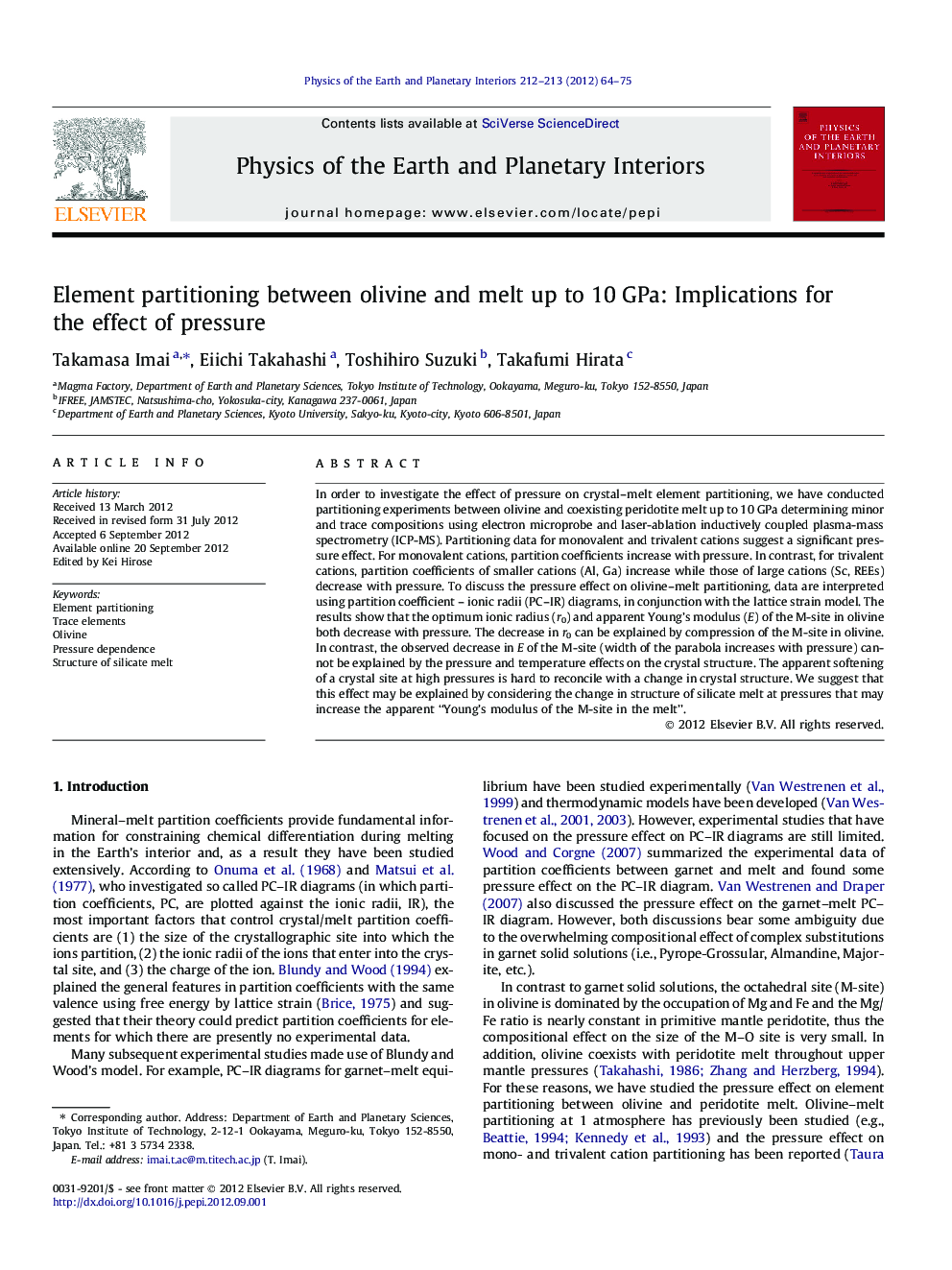| کد مقاله | کد نشریه | سال انتشار | مقاله انگلیسی | نسخه تمام متن |
|---|---|---|---|---|
| 4741734 | 1641528 | 2012 | 12 صفحه PDF | دانلود رایگان |

In order to investigate the effect of pressure on crystal–melt element partitioning, we have conducted partitioning experiments between olivine and coexisting peridotite melt up to 10 GPa determining minor and trace compositions using electron microprobe and laser-ablation inductively coupled plasma-mass spectrometry (ICP-MS). Partitioning data for monovalent and trivalent cations suggest a significant pressure effect. For monovalent cations, partition coefficients increase with pressure. In contrast, for trivalent cations, partition coefficients of smaller cations (Al, Ga) increase while those of large cations (Sc, REEs) decrease with pressure. To discuss the pressure effect on olivine–melt partitioning, data are interpreted using partition coefficient – ionic radii (PC–IR) diagrams, in conjunction with the lattice strain model. The results show that the optimum ionic radius (r0) and apparent Young’s modulus (E) of the M-site in olivine both decrease with pressure. The decrease in r0 can be explained by compression of the M-site in olivine. In contrast, the observed decrease in E of the M-site (width of the parabola increases with pressure) cannot be explained by the pressure and temperature effects on the crystal structure. The apparent softening of a crystal site at high pressures is hard to reconcile with a change in crystal structure. We suggest that this effect may be explained by considering the change in structure of silicate melt at pressures that may increase the apparent “Young’s modulus of the M-site in the melt”.
► We investigated olivine–melt partitioning of major, minor and trace elements up to 10 GPa.
► Our result shows pressure dependence of partition coefficients for mono and trivalent cations.
► Trivalent element partition coefficients (PC) form parabolic curves on PC-ionic radius (PC-IR) diagrams that change with pressure.
► The peak position of the PC-IR curve decreased with pressure, corresponding to a change of the M-site size of olivine.
► PC-IR curves become wider with pressure, possibly as a result of changes in silicate melt structure.
Journal: Physics of the Earth and Planetary Interiors - Volumes 212–213, December 2012, Pages 64–75